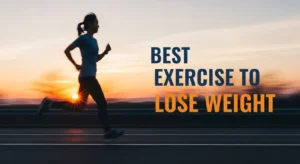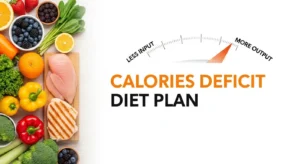What cardio burns the most calories? If you're looking to maximize your calorie burn through cardiovascular exercise, understanding which workouts deliver the best results is crucial. Research shows that high-intensity activities like sprinting can torch up to 800-1,000 calories per hour, while vigorous swimming with the butterfly stroke follows closely behind at 700-1,000 calories per hour. However, the effectiveness of any cardio workout depends on several key factors that influence your personal calorie burn rate. Your individual characteristics like weight, muscle mass, and fitness level play significant roles, as does your exercise intensity and proper form execution.
This comprehensive guide will walk you through the science of calorie burn during exercise and provide an evidence-based ranking of the most effective cardio workouts for calorie expenditure, helping you make informed decisions about your fitness routine.
The Science of Calorie Burn During Exercise
Understanding what cardio burns the most calories helps explain why certain activities are more effective than others. During cardio exercise, our bodies primarily use two energy systems:
- The aerobic system: Uses oxygen to break down carbohydrates and fats for sustained energy
- The anaerobic system: Produces energy without oxygen for short, intense bursts of activity
The most effective calorie-burning exercises typically engage both systems while working multiple large muscle groups simultaneously.
Ranking the Top Calorie-Burning Cardio Exercises
1. Running (Sprinting)
- Calories burned: 800-1,000 per hour
- Engages: Legs, core, arms
- Key benefits: Improves speed, power, and cardiovascular endurance
- Best for: High-intensity interval training (HIIT)
2. Swimming (Butterfly Stroke)
- Calories burned: 700-1,000 per hour
- Engages: Full body
- Key benefits: Low-impact, builds strength and endurance
- Best for: Full-body workout with minimal joint stress
3. Rowing
- Calories burned: 600-800 per hour
- Engages: 86% of body's muscles
- Key benefits: Combines cardio and strength training
- Best for: Overall fitness improvement
4. High-Intensity Interval Training (HIIT)
- Calories burned: 600-900 per hour
- Engages: Full body depending on exercises chosen
- Key benefits: Afterburn effect (EPOC), time efficiency
- Best for: Maximizing calorie burn in limited time
The beauty of HIIT lies in its versatility and efficiency. When performing high-intensity intervals, your body continues burning calories long after the workout ends through a process called excess post-exercise oxygen consumption (EPOC). This “afterburn effect” can last up to 24-48 hours, making HIIT particularly effective for overall calorie expenditure.
5. Jumping Rope
- Calories burned: 600-800 per hour
- Engages: Lower body, shoulders, core
- Key benefits: Improved coordination, portable exercise option
- Best for: Cardiovascular endurance and agility training
Jumping rope combines cardiovascular endurance with coordination and agility training. It's a highly efficient exercise that can be done almost anywhere, making it an excellent option for travelers or those with limited exercise space.
Factors That Influence Calorie Burn
Several key factors determine how many calories you'll burn during cardio exercise:
- Body Weight and Composition Your current weight significantly impacts calorie burn. Generally, a person weighing more will burn more calories performing the same activity as someone lighter, simply because moving more mass requires more energy.
- Exercise Intensity The harder you work, the more calories you'll burn. This is why high-intensity exercises typically top the lists of calorie-burning activities. However, intensity must be balanced with sustainability and injury prevention.
- Fitness Level As your fitness improves, your body becomes more efficient at performing exercises, which means you'll need to increase intensity or duration to maintain the same calorie burn.
- Exercise Duration Longer workouts naturally burn more calories, but quality often matters more than quantity. A shorter, high-intensity workout can burn more calories than a longer, low-intensity session.
Maximizing Calorie Burn: Expert Tips
To get the most out of your cardio workouts:
- Focus on Form Proper form ensures you're engaging the right muscles and maximizing energy expenditure while preventing injury. Consider working with a certified trainer initially to learn correct techniques.
- Progressive Overload Gradually increase workout intensity or duration to prevent plateaus. This might mean adding speed, resistance, or time to your workouts as your fitness improves.
- Combine Different Types Mix various cardio exercises to challenge different muscle groups and prevent boredom. This also helps prevent overuse injuries and ensures well-rounded fitness.
Building Your Optimal Calorie-Burning Workout Plan
When designing your workout routine, consider these factors:
- Your current fitness level
- Available time and equipment
- Personal preferences and enjoyment
- Physical limitations or medical conditions
- Recovery capacity and overall stress load
Sample Weekly Workout Schedule for Maximum Calorie Burn
Monday: High-intensity sprinting intervals (30 minutes) Tuesday: Swimming or rowing (45 minutes) Wednesday: Rest or light activity Thursday: Jump rope HIIT workout (30 minutes) Friday: Choice of favorite cardio (45 minutes) Saturday: Long, steady-state cardio session (60 minutes) Sunday: Active recovery (walking, light swimming)
Conclusion
What cardio burns the most calories? While sprinting and swimming typically top the lists, the most effective cardio workout is one you'll do consistently and safely. Focus on gradually building intensity, maintaining proper form, and listening to your body. Combine different types of cardio exercises to challenge your body in new ways and prevent plateaus. Remember that sustainable progress comes from finding activities you enjoy and can maintain long-term, rather than forcing yourself through exercises you dread.
Most importantly, complement your cardio routine with proper nutrition and adequate rest for optimal results. Consider working with fitness professionals to develop a personalized plan that accounts for your specific goals, limitations, and preferences.
Remember, the journey to improved fitness is a marathon, not a sprint. Start where you are, progress gradually, and celebrate your improvements along the way.
Common Questions About Calorie-Burning Cardio
Q: What cardio burns the most calories in 30 minutes? A: Sprint intervals typically burn the most calories in a short timeframe, potentially burning 300-400 calories in just 30 minutes.
Q: Should I exercise on an empty stomach to burn more calories? A: While some people prefer fasted cardio, research shows total daily calorie burn is similar whether you eat before exercise or not. Focus on what feels best for your body.
Q: How often should I do high-intensity cardio? A: Most experts recommend 2-3 high-intensity sessions per week, allowing adequate recovery between workouts.
Q: Does low-intensity cardio burn fat better? A: While low-intensity exercise uses a higher percentage of fat for fuel, total calorie burn matters most for fat loss. Both high and low-intensity cardio can be effective when properly programmed.
Q: How can I burn more calories without spending hours exercising? A: Focus on compound exercises, incorporate HIIT, and maintain proper intensity during shorter workouts rather than extending duration.
Q: Will I burn more calories by exercising in the morning? A: The best time to exercise is when you can consistently do it. There's no significant difference in calorie burn based on time of day.








